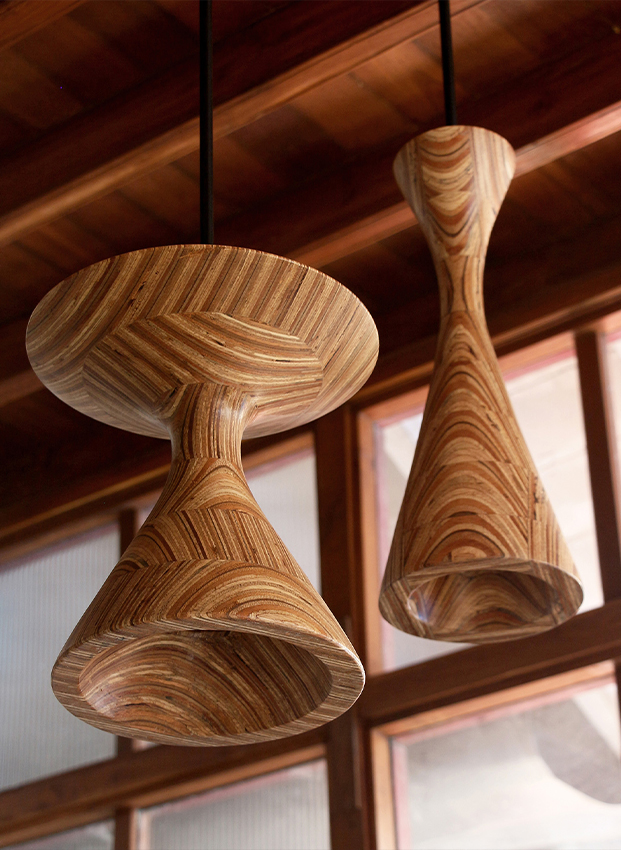Why Subodh Gupta’s Sculptures Are Turning Heads At Aerocity, New Delhi
GMR Aerocity’s collaboration with the Kiran Nadar Museum of Art features three sculptures by Subodh Gupta in the Fountain Area of Aerocity, New Delhi.
- 19 Aug '24
- 11:07 am by Sana Chohan
Born in Bihar in 1964, Subodh Gupta is a luminary in contemporary art in India, consistently pushing the boundaries of media, materiality, scale, and perception through his work. Gupta is renowned for his ability to transform everyday items from Indian life—such as kitchenware and modes of transport like bicycles and scooters—into thought-provoking sculptures, typically crafted from bronze, steel, and aged utensils. With these mundane objects, Gupta moulds narratives of irony and wit, juxtaposing the simplicity of the items with profound philosophies. His 2008 work, ‘Gandhi’s Three Monkeys,’ reinterprets the iconic trinity of peace by depicting human heads, commenting on the consequences of violence and subverting traditional ideas of power and control within the broader context of civilization.
Having toured the world through various exhibitions, such as the ‘STILL, STEAL, STEEL’ show at Jack Shainman Gallery (March–April 2008) and more recently at the Katara Cultural Village in Doha, Qatar, the sculptures now stand sentinel over the busy intersection at Aerocity, serving as an iconic landmark and a striking visual narrative that demands attention. The strategic placement of these works in a public space maximises their impact and fulfils the intended aim of making art more accessible to all.
Also read: An Exclusive With Globally Acclaimed Artist, Subodh Gupta

The three wise monkeys—familiarly linked to Mahatma Gandhi—were originally introduced to him as a gift from the Japanese monk Nichidatsu Fujii. These figures—Bapu, Ketan, and Bandar—draw inspiration from a 17th-century Japanese pictorial maxim featuring the three wise monkeys—Mizaru, Kikazaru, and Iwazaru—which were originally carvings over a stable door at the Tōshō-gū shrine in Nikkō, Japan. Carved by Hidari Jingoro and believed to have incorporated Confucius’ Code of Conduct, the monkeys symbolically represent the cycle of human life.
Gupta’s sculptures recall Gandhi’s vision of the three monkeys as a means to combat modern-day colonialism, oppression, and injustice peacefully. Instead of monkeys with their eyes, ears, or mouths covered, Gupta created sculptures of human heads. These figures, adorned with a balaclava, a gas mask, and a soldier’s helmet, respectively—made from brass utensils—refer to a new era, suggesting the omnipresence of cruelty in the cyclical nature of time. Rather than foretelling an apocalypse, Gupta suggests that aggression is constant, intertwined within the very fabric of human existence.
Also read: A Look At Subodh Gupta’s Grand Kinetic Sculptures On Display At Nature Morte, Delhi

Gupta’s work, although universally resonant, is deeply personal. Drawing from his childhood memories of growing up in a railway colony in a small village in Bihar, he delves into the depth of Indian ethos and identity to create art that serves as a powerful emblem of modernity. In his sculptures and paintings, he reflects upon the theatre of life, the performers who move through it, the props with which they engage, and the implied narratives. His work offers a poignant commentary on the complex social, economic, and cultural threads that make up our society. The repetitive aspect of rituals becomes a leitmotif in his practice, evident from his use of utensils in installations and performative videos. Gupta’s reimagining of the proverb lends domesticity to otherwise violent images, thus furthering Gandhian philosophy from the heart of the nation’s capital through art.


























